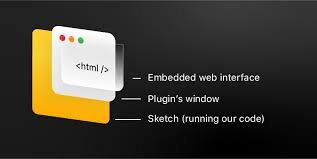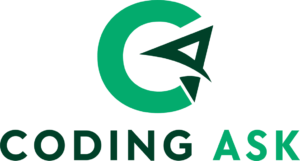HTML Plug-ins

Computer programs called HTML plug-ins increase the browser’s built-in capabilities.
Plug-ins
Plug-ins were intended to be utilized for a wide range of applications.
- To utilize Java applets
- In order to use Microsoft ActiveX controls
- To show Flash movies
- To show maps
- To perform a virus scan
- To authenticate a bank ID
Warning !
Java Applets and Plug-ins are no longer supported by most browsers.
None of the browsers support ActiveX controls anymore.
Modern browsers have also disabled support for Shockwave Flash.
The < object > Element
All browsers support the <object> element.
An embedded object in an HTML document is defined by the <object> element.
It can also be used to incorporate HTML in HTML, although its primary purpose was to embed plug-ins (such as Java applets, PDF readers, and Flash Players) in web pages:
Example
"code mukvo"
Or images if you like:
Example
"code mukvo"
The < embed > Element
All popular browsers support the <embed> element.
An embedded item within an HTML document is also defined by the <embed> element.
The <embed> element has been supported by web browsers for a very long time. But prior to HTML5, it was not included in the HTML specification.
Example
"code mukvo"
Keep in mind that the <embed> element lacks a closing tag. Alternative text cannot be included in it.
HTML can also be included in HTML using the <embed> element:
Example
"code mukvo"
HTML plug-ins
browser
Java applets
ActiveX controls
Flash movies
maps
virus scanning
bank ID verification
element
element
embedded object
HTML5
HTML
HTML5
HTML tutorials
Learn HTML
Free HTML tutorials
HTML Example
HTML Explained
When building websites, HTML offers a wide range of capabilities, but sometimes additional functionality is needed beyond the core language. This is where HTML plug-ins come into play. Plug-ins are software components that extend the functionality of web browsers, allowing for the integration of various multimedia elements, interactive features, and specialized applications.
Some common examples of HTML plug-ins include:
– Java Applets: Small applications written in the Java programming language that can be embedded in web pages to provide interactive content.
– ActiveX Controls: Microsoft’s proprietary plug-in technology that enables the integration of various Windows-based applications and components.
– Flash Movies: Multimedia content created using Adobe Flash, which can be embedded in web pages to display animations, videos, and interactive elements.
– Browser Extensions: Plug-ins that add new features or modify the behavior of a web browser, such as ad blockers, password managers, or social media integrations.
These plug-ins are typically embedded in web pages using the “, “, or “ HTML elements, or the newer “ element introduced in HTML5.
While plug-ins can enhance the user experience and functionality of web pages, it’s important to consider their potential drawbacks, such as compatibility issues, security concerns, and the need for users to have the appropriate plug-in installed. Careful consideration should be given to the use of plug-ins to ensure they provide a seamless and secure experience for your website’s visitors.
HTML, the backbone of the web, has evolved significantly over the years, and one of the key advancements has been the introduction of plug-ins. These small software components extend the functionality of web browsers, allowing users to interact with a wider range of content and applications.
Plug-ins come in various forms, including Java applets, ActiveX controls, and Flash movies, each serving a specific purpose. For example, plug-ins can be used to display interactive maps, perform virus scanning, or enable bank ID verification.
The HTML “ element is the primary way to embed these plug-ins into web pages. The “ element serves as a container for the plug-in, specifying the necessary parameters and attributes to ensure proper integration.
With the advent of HTML5, the landscape of plug-ins has shifted. While traditional plug-ins are still in use, HTML5 offers native support for many multimedia and interactive features, reducing the reliance on external plug-ins. However, certain specialized applications may still require the use of plug-ins to provide a seamless user experience.
As web development continues to evolve, understanding the role and implementation of HTML plug-ins remains an essential skill for web designers and developers. By leveraging these powerful tools, they can create more engaging and feature-rich web experiences for their users.
